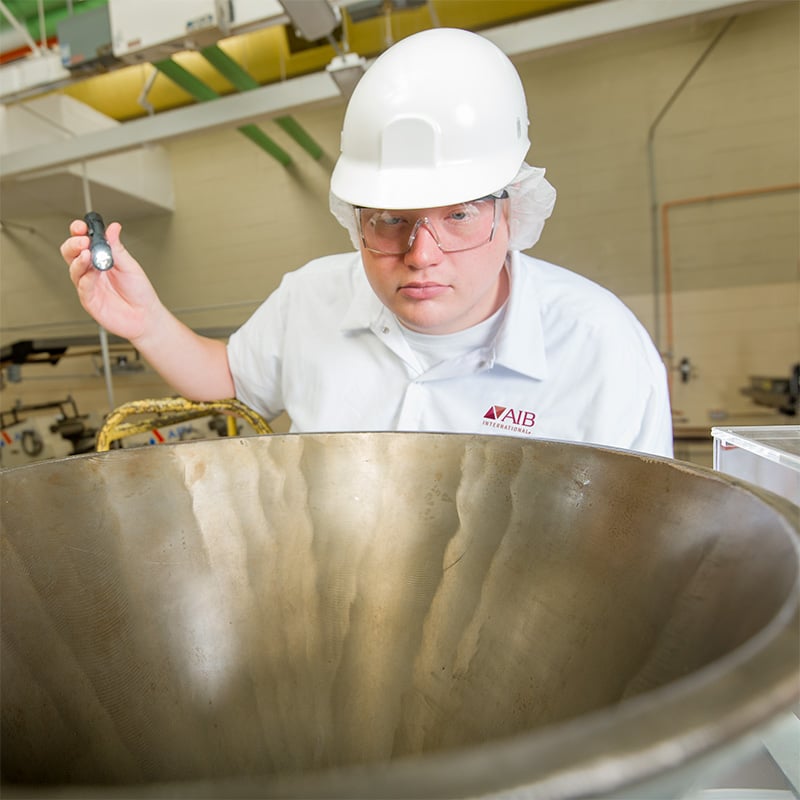How to Avoid Common Mistakes in Food and Beverage Packaging
When you invest time, money, and effort into safe, high-quality food and beverage products, the last thing you want is for a preventable packaging mistake to negatively impact consumer health and safety. Lack of training and teamwork, unclear or contradictory instructions, and unforeseen issues are some of the most common factors that can adversely affect your food safety plan.
Having procedures in place to avoid food and beverage packaging mistakes provides a safety net for the health of both your company and your customers. Here are 10 proactive ways to ensure food safety in your food and beverage packaging operation.
10 Tips to Avoid Common Food and Beverage Packaging Mistakes
1. Know your prerequisite standard requirements
Most of the failures related to good manufacturing practices (GMP) in the food and beverage packaging industry result from lack of knowledge regarding prerequisite standards. While there is no guarantee of perfection, regularly reviewing the standards will ensure your team has a firm understanding of not just what to do, but why they should do it. If your facility follows the recommendations, your retail food packaging challenges will be manageable and easy to correct.
Pro tip: Looking to familiarize yourself with industry standards in regulations, inspections, and certifications? Download the complimentary AIB International Consolidated Standards, available for ten different industries and in a variety of languages.
2. Coordinate monthly self-inspections
Self-inspections are primarily meant to assess whether the facility is maintaining its GMP standards or if corrective measures are needed. However, if this evaluation is not conducted regularly enough to create a culture of food safety, then the program fails and problems with your food and beverage packaging will persist.
If you have not yet set your monthly self-inspection calendar, now is a good time to do so. Prioritize performing your self-inspection even if you must change it from the original date in your schedule.
3. Verify the extent of previous nonconformities
Each inspection identifies opportunities for improvement, whether they be in operational methods, cleaning, maintenance, integrated pest management, or documentation. A common mistake is to fix only what the inspection uncovered and not check if the same problem is occurring elsewhere in the facility. Failure to implement a comprehensive solution plan will lead to recurrent and even larger problems.
4. Correction of only the serious and unsatisfactory findings
As part of an audit process, it is common that minor observations and findings categorized as “Needs Improvement” are ignored under the excuse of prioritizing the major or serious findings. By definition, a “Needs Improvement” recommendation means that findings have the potential to become more serious and even lead to food contamination or program failure.
Your team should develop a plan to deal with all audit findings. Do not ignore those deemed less critical, as they can develop into major issues with your retail food packaging if left unattended.
5. Focus on the root cause
Ignoring the root cause of nonconformities during self-inspections leads to increased risk of errors. Resolving the symptom of the problem, but not its underlying cause, will only lead to more significant issues in the mid- and long-term.
6. Ensure your leadership team is committed to your food safety program
A food safety program cannot survive without the support of the leadership team. Apart from providing the necessary resources, the leadership team is also responsible for setting an example and making sure everyone follows the rules.
If your food safety program has yet to be approved, make sure to explain the potential financial and reputational consequences if it is not approved and implemented soon to encourage management to act.
7. Share the responsibility
It’s a common misconception that the quality team is solely responsible for retail food packaging quality issues. You should share common responsibilities such as self-inspections and cleaning checkout processes with the entire multidisciplinary team. Otherwise, you risk overwhelming a team with limited resources and preventing them from focusing on more critical quality issues.
8. Ensure the quality team has the resources it needs
Quality control can only be achieved if resources are available. It’s not uncommon for action plans developed after a self-inspection to be put on hold due to a lack of resources. Often, companies will hesitate to commit to large investments at once. However, postponing critical investments can lead to costly safety disasters regarding your retail food packaging down the road.
Equipment such as metal detectors, X-rays, automatic doors, and surfaces with sanitary designs are expensive, but can be necessary to ensure that the food produced is safe.
9. Prioritize transparency
Audits are stressful, and tensions run high. However, the true aim of an audit is to help ensure you maintain food safety standards by identifying areas that require attention. Attempts to hide issues or justify findings in any way are unethical and only slow down the corrective action process.
Be transparent with your colleagues about the results of an audit — whether negative or positive. Avoid directing blame at a particular person or team, as this can create additional stress and impede the collaboration needed to make improvements. However, ensure that everyone involved is aware of the seriousness of the issue and committed to resolving it quickly.
10. Put the consumer first
No matter what role someone plays in the food and beverage packaging process, the ultimate objective of having a food safety plan in place, going through inspections and audits, and implementing all the checkpoints along the way is to protect consumers. Everyone in your operation is responsible for making sure your product is safe for consumers.
Access Additional Resources for Retail Food Packaging Support
By simply following these recommendations for food safety, your organization can avoid mistakes in packaging that could negatively impact the outcome of your audit or, more critically, consumer health. AIB International offers a number of additional resources to support your packaging efforts, including our Product Protection for Packaging Manufacturers series and our HACCP Workshop for Packaging.


